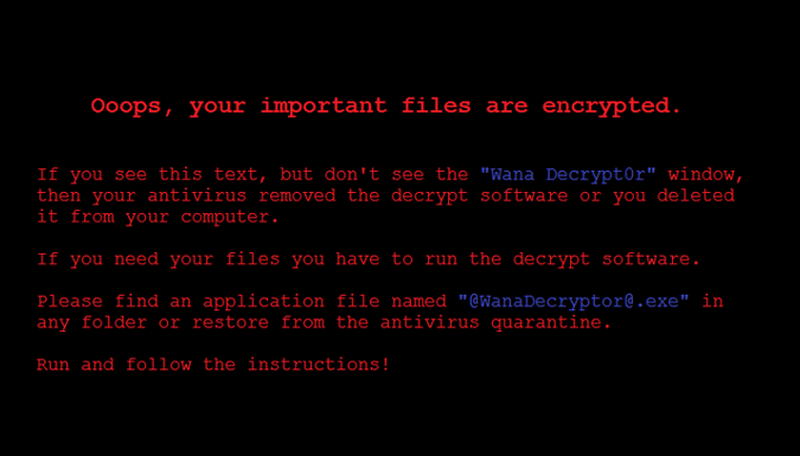Internet users globally, are under threat of a massive cyber-attack identified last week that is spreading, and Zimbabwe is no exception.
To help people stay protected we have created a list of Frequently Asked Questions about the attack as well as ways you can stay safe.
First, what is this attack exactly?
The massive started spreading globally on Friday 12 May. The cyber-attack has hit organisation in Russia, UK, Italy, Spain, Germany, UK, China and other countries.
150 countries have been counted so far and Zimbabwe is one of them, albeit the scale reported is not that extensive in Zimbabwe.
Europol, a police body of the EU, has said the scale of the WannaCry cyber-attack is “unprecedented”.
What is Ransomware?
The attack is of a type called Ransomware. Basically ransomware is malicious software that locks the files on your computer until you pay a ransom.
Payment in bitcoin is usually demanded.
In the specific attack that happened last week, the hackers are asking for $300 in bitcoin.
WannaCry is suspected to have spread via a computer virus type called a worm. Worms spread easily on a network of computers, especially inside an organisation.
Am I at risk?
The ransomware is targeting computers (laptops, desktops, phones, tablets) that use Microsoft Windows.
Microsoft Windows is the most popular operating system in Zimbabwe by far. In Zimbabwe 90% of all computers use Microsoft Windows.
Windows had a certain security problem that allowed this kind of attack to happen. Microsoft has since released an update to plug this security hole. However, not all computers are patched. In fact, it is highly probably that computers at your company have not been updated yet.
So if my computer is not updated, I can be attacked anytime?
Just because your computer is not updated does not mean that you will certainly be attacked by this ransomware.
Infections have to spread from somewhere, which means your computer will only be attacked if it connects to another computer that is infected. This can easily happen inside companies where tens or hundreds of computers are connected to the same network.
Windows computers on company networks are therefore at a higher risk than individuals at home for this particular attack.
I’m on Microsoft Windows, how do I protect myself?
The best way to stay safe is to keep your Windows updated against such attacks. Therefore, make sure Windows Update is enabled by default.
Microsoft has published an article on this specific issue titled “Customer Guidance for WannaCrypt attacks”
- If you’re running Windows 10, then you shouldn’t worry about this attack. It’s already secure.
- If you’re running Windows 8.1, 8 and 7, download and apply Microsoft Security Bulletin MS17-010 by visiting this page.
- For those of you running Windows XP, you will need to wait a bit longer before an update is released by Microsoft.
What about my Antivirus? Can’t it protect me?
First, your antivirus is not a substitute for updating your computer with the Windows Updates mentioned above. Update your computer before worrying about your antivirus.
However, you certainly need to keep your antivirus updated always. This will ensure that it can detect the Ransomware and possibly prevent it from infecting your computer. Though relying on it preventing attack is highly risky – again, update your Windows as a priority!
What are the other ways I can protect myself?
- Backup your files so that in case you’re attacked, you don’t have to pay the ransom. You can easily just format your PC and restore your files, ensuring ofcourse that you update your Windows first.
- Be skeptical of any updates that are not coming from Microsoft Windows itself. You could actually infect yourself by being tricked into installing a “WannaCry Fix” downloaded from the internet.
- Always be suspicious of email attachments, download links on the internet and any attachments to chats on Skype that claim to be “a document you need to see”, “software to speed up your computer”, “Pictures to see” etc…
- Make sure you don’t connect to WiFi networks that you don’t know or trust. But even if you connect make sure that you choose an option in Windows that say you’re connecting to a public WiFi network. This increases your security.

8 comments
Buy a MacBook and nevercry
It might bee rare, but the fruit heads did cry not too long ago from their own ransomware attack. I guess in the end, vigilance is a better deterrent than the logo on your machine
Download Ubuntu wipe the entire disk, enable updates, no need for an antivirus and you will be saved.
Don’t fool yourself with a false sense of security brother, thinking that hackers do not know how to use linux, in fact is one of the tools used for penetration, and what makes you think its virus proof. I you see it that way one day you will cry. Be warned
Ubuntu was built with security in mind, if that means anything to you!
Can’t believe you left the most important one….. Don’t open emails or download email files from unknown sources…. Please update the article because that’s how the work is spreading in the first place….. And don’t forget USB drive protection
If possible shut down your computer completely when not in use
Hi, I am John working in IT company. Cause of busy I work in my home so, I need a high-configuration which is one of the
best computers.best computers.
So, I was feeling worried about the best computer. By friend suggest me to visit your website and got it. This is really good product.
Specially RAM, graphic, and all configuration are good. I am happy. I am happy.